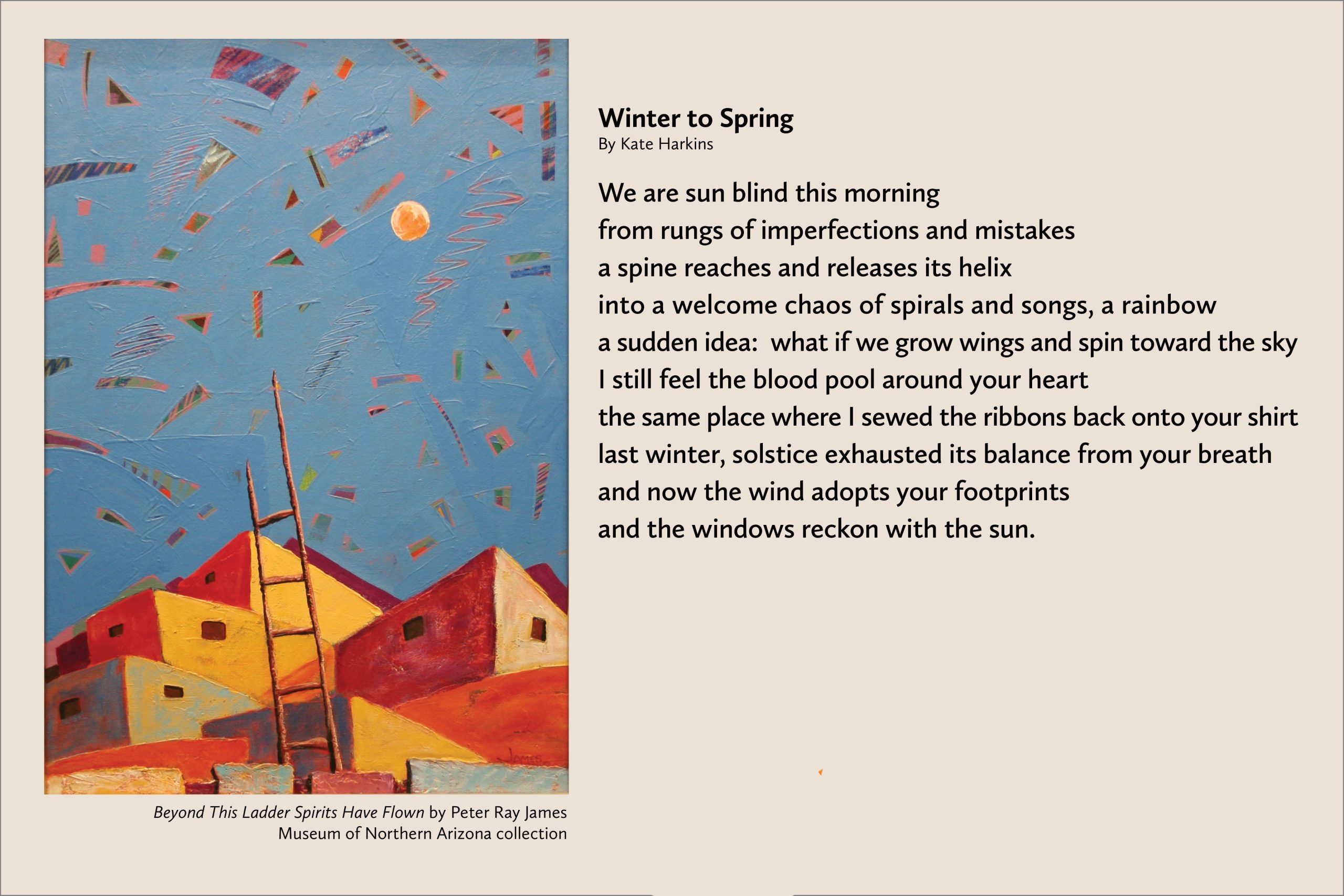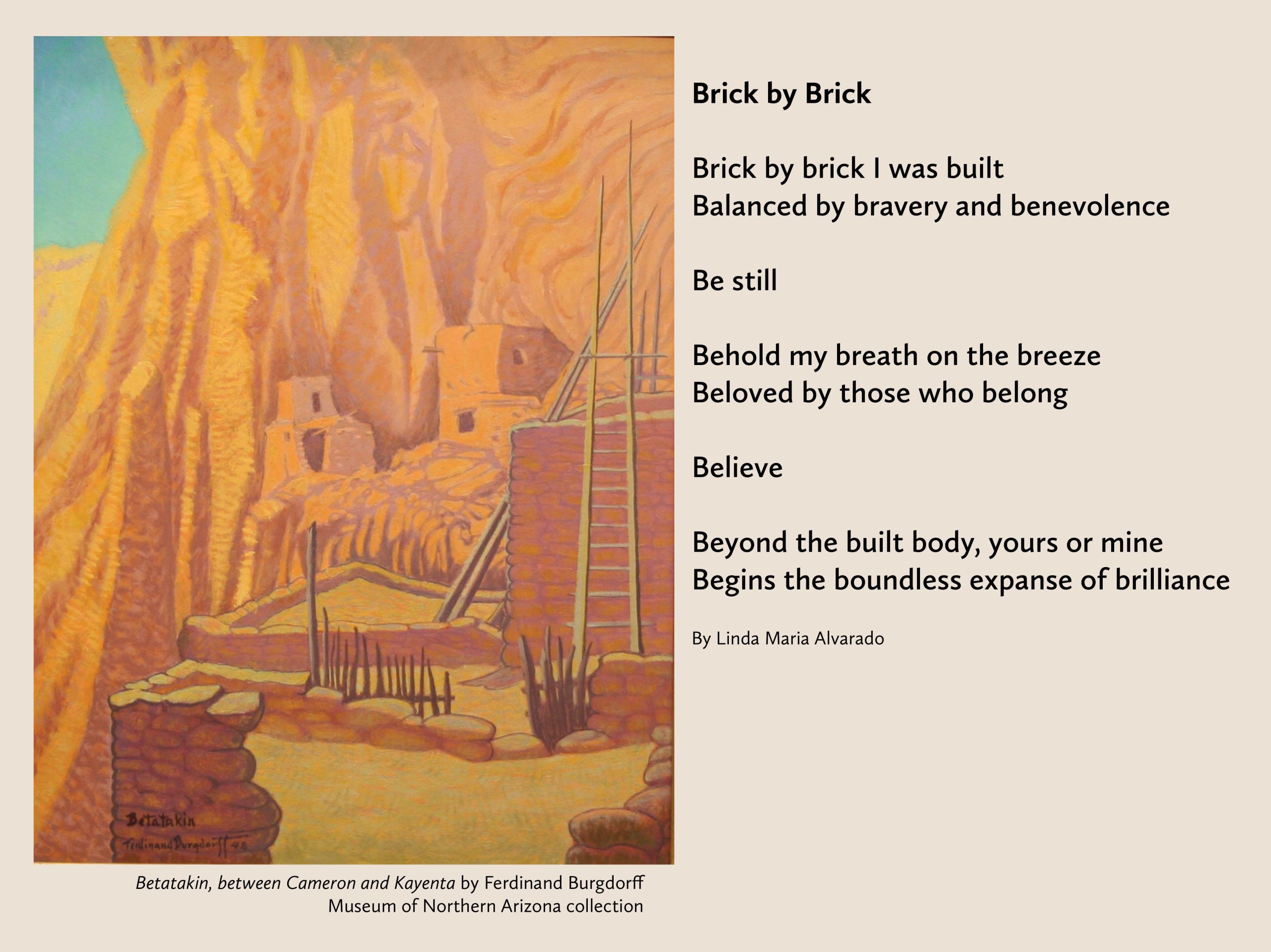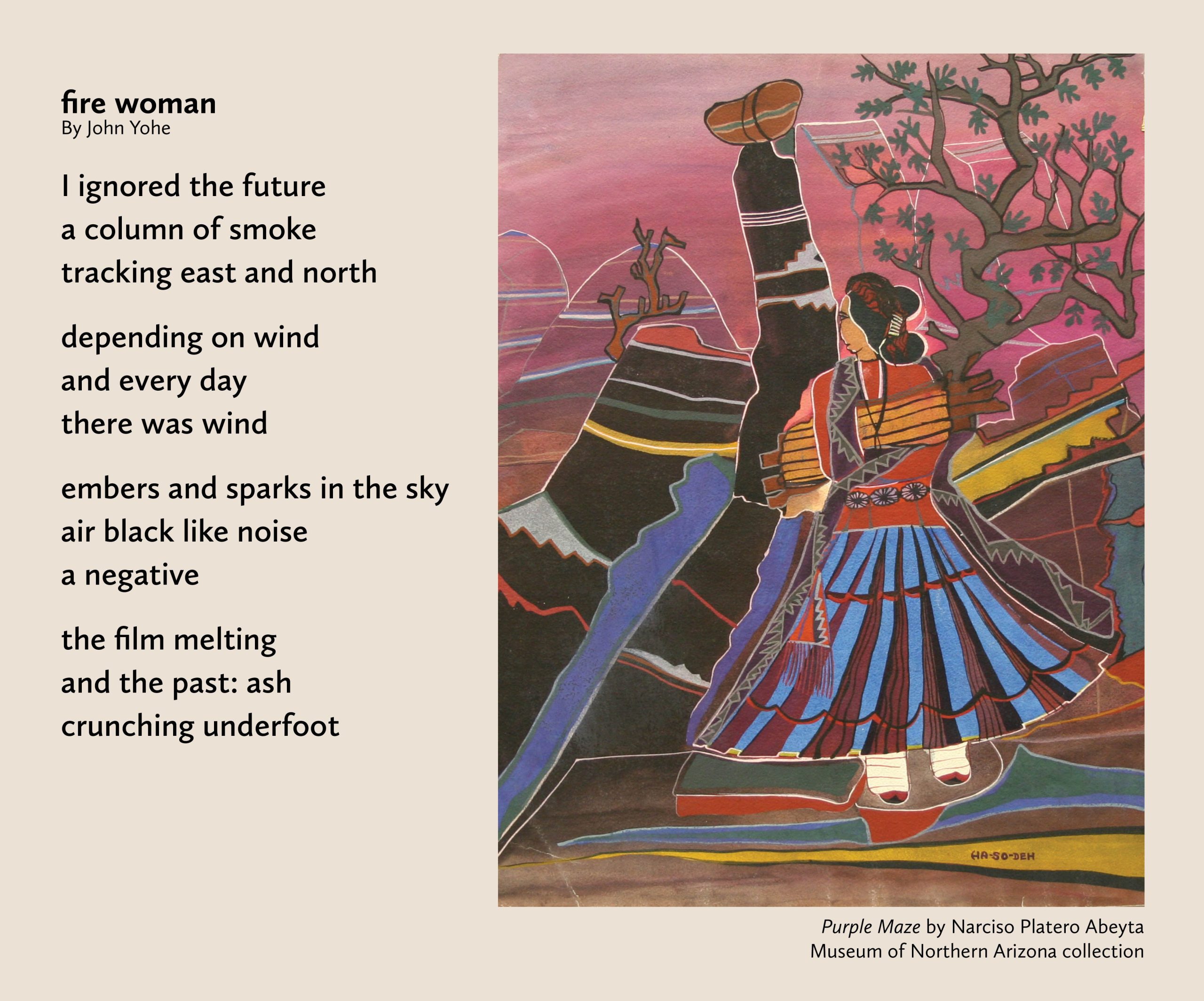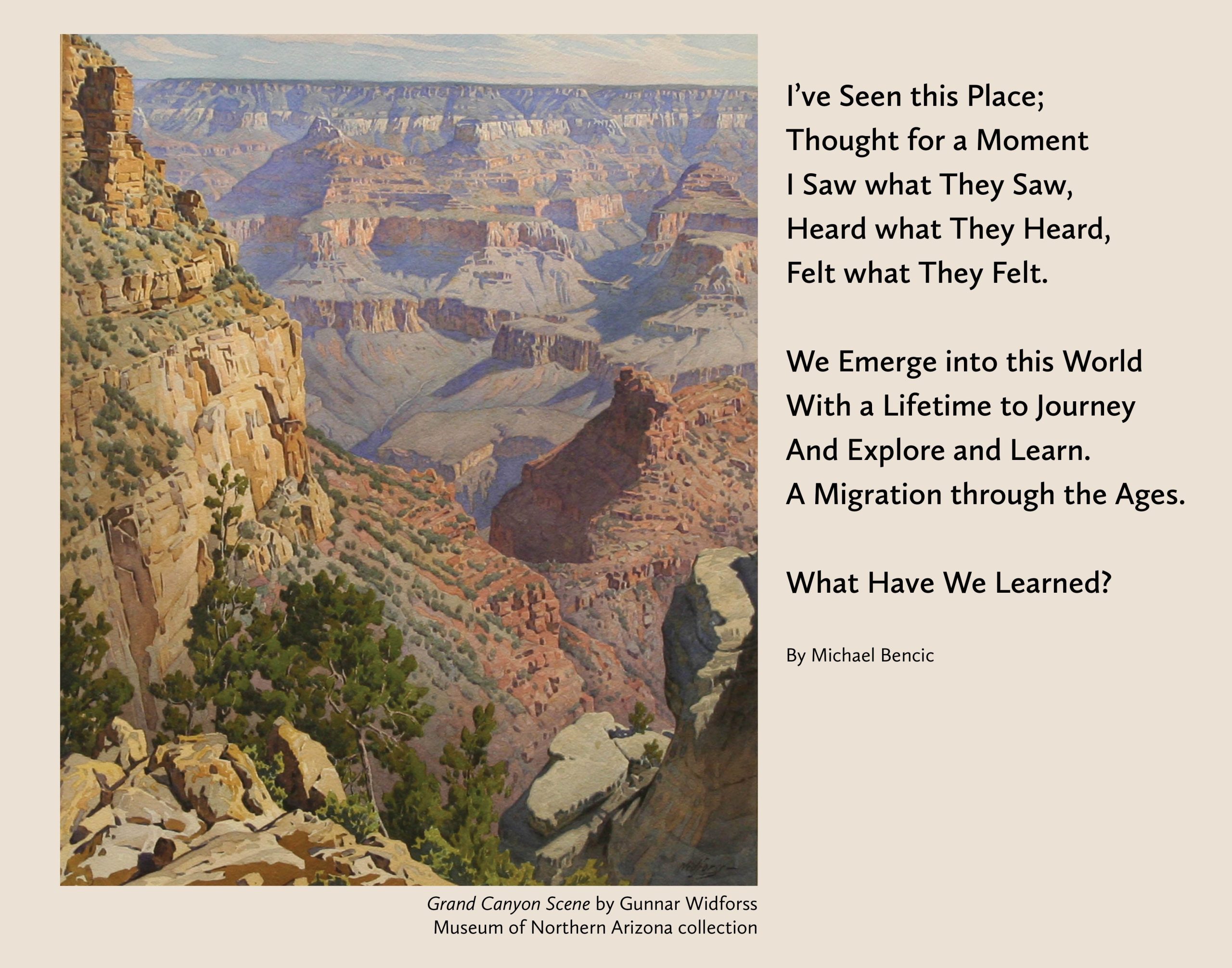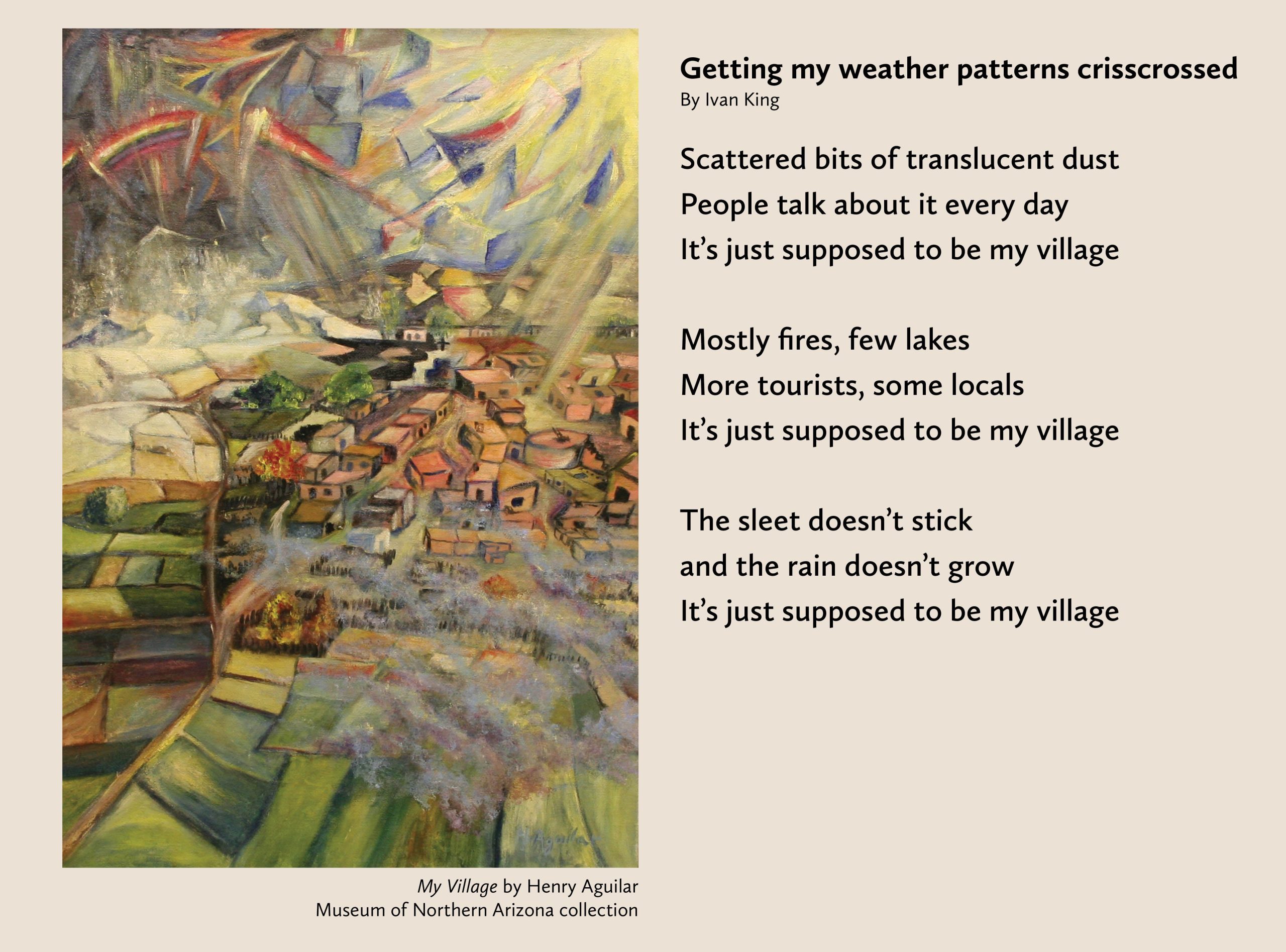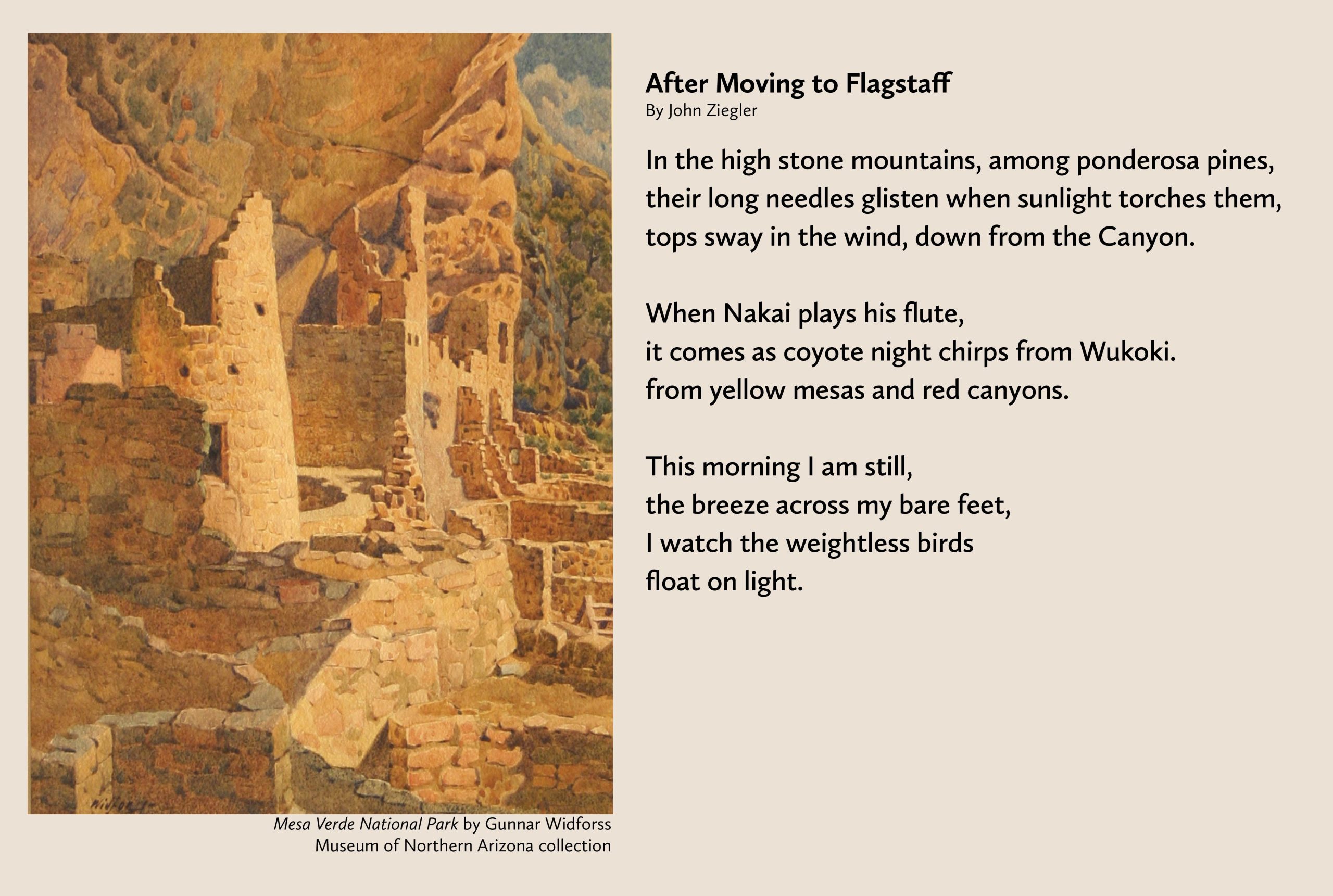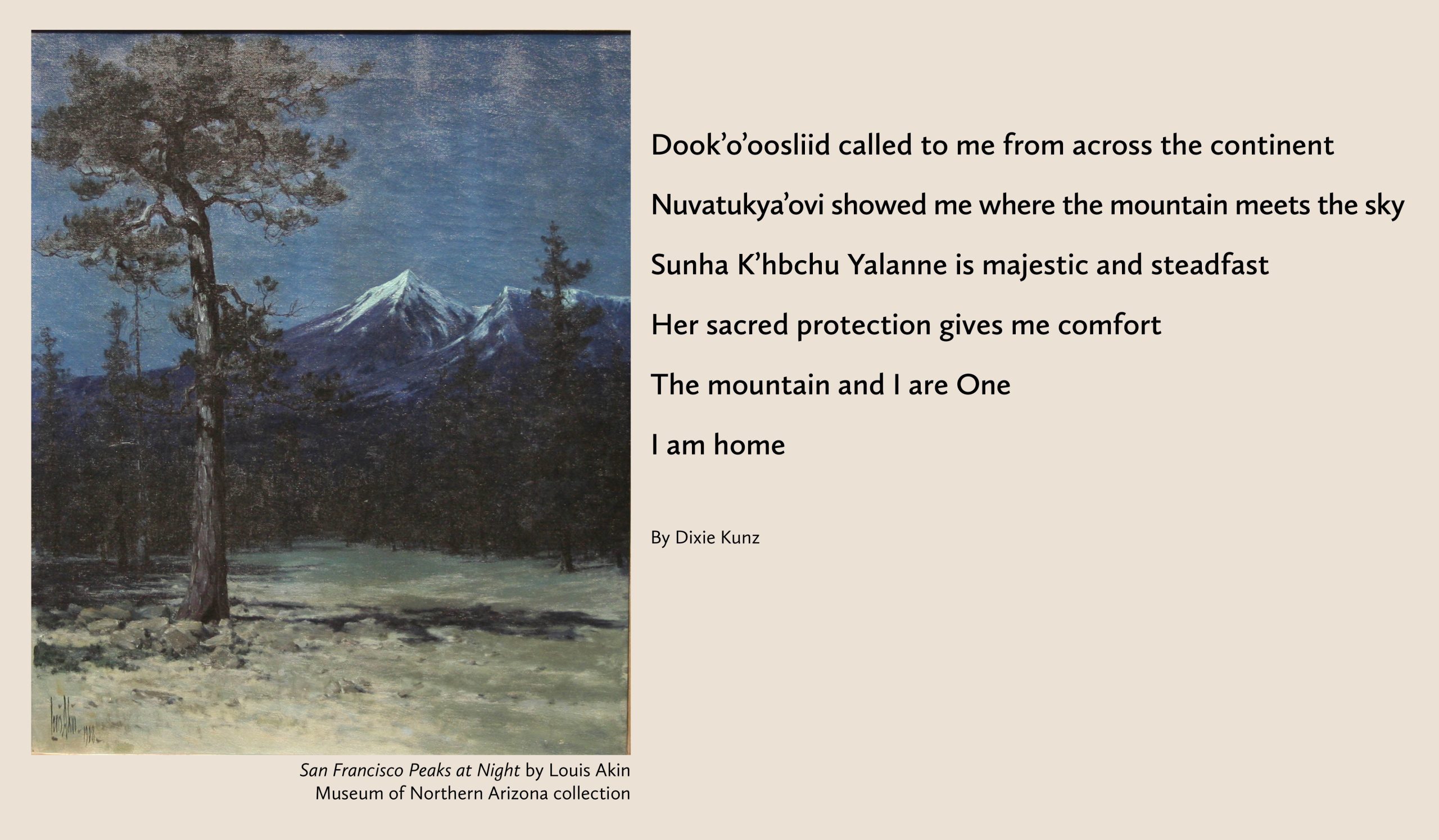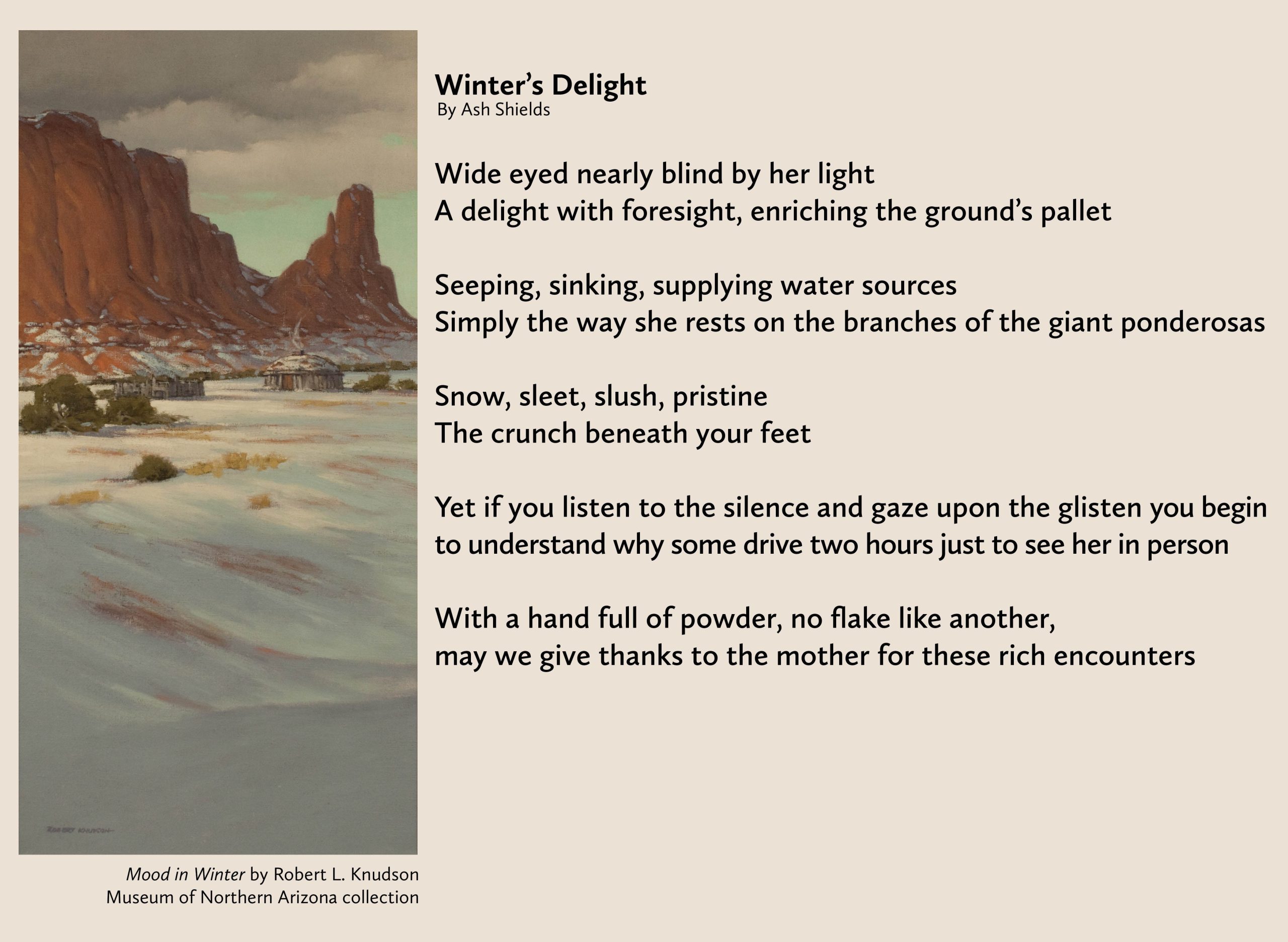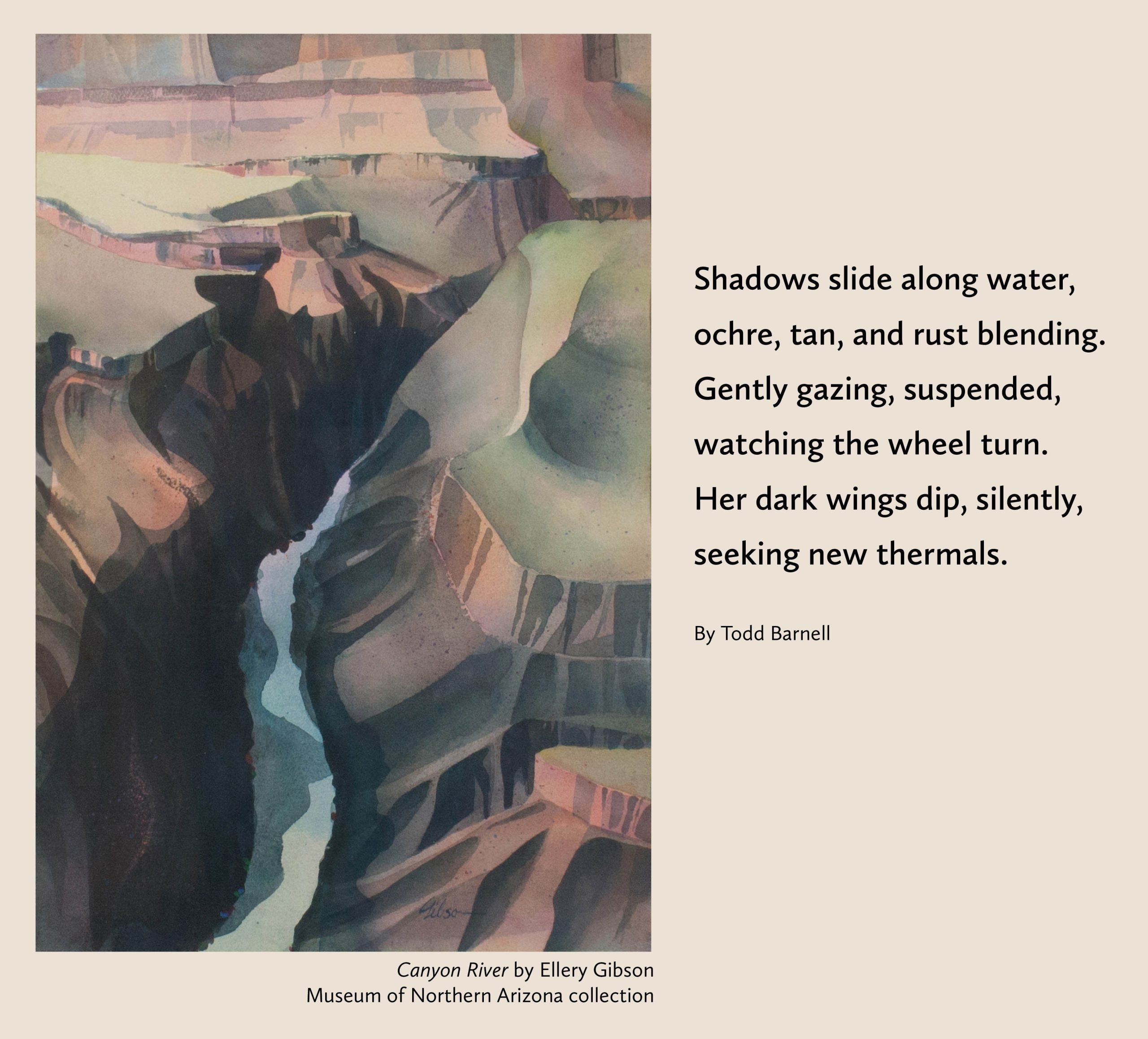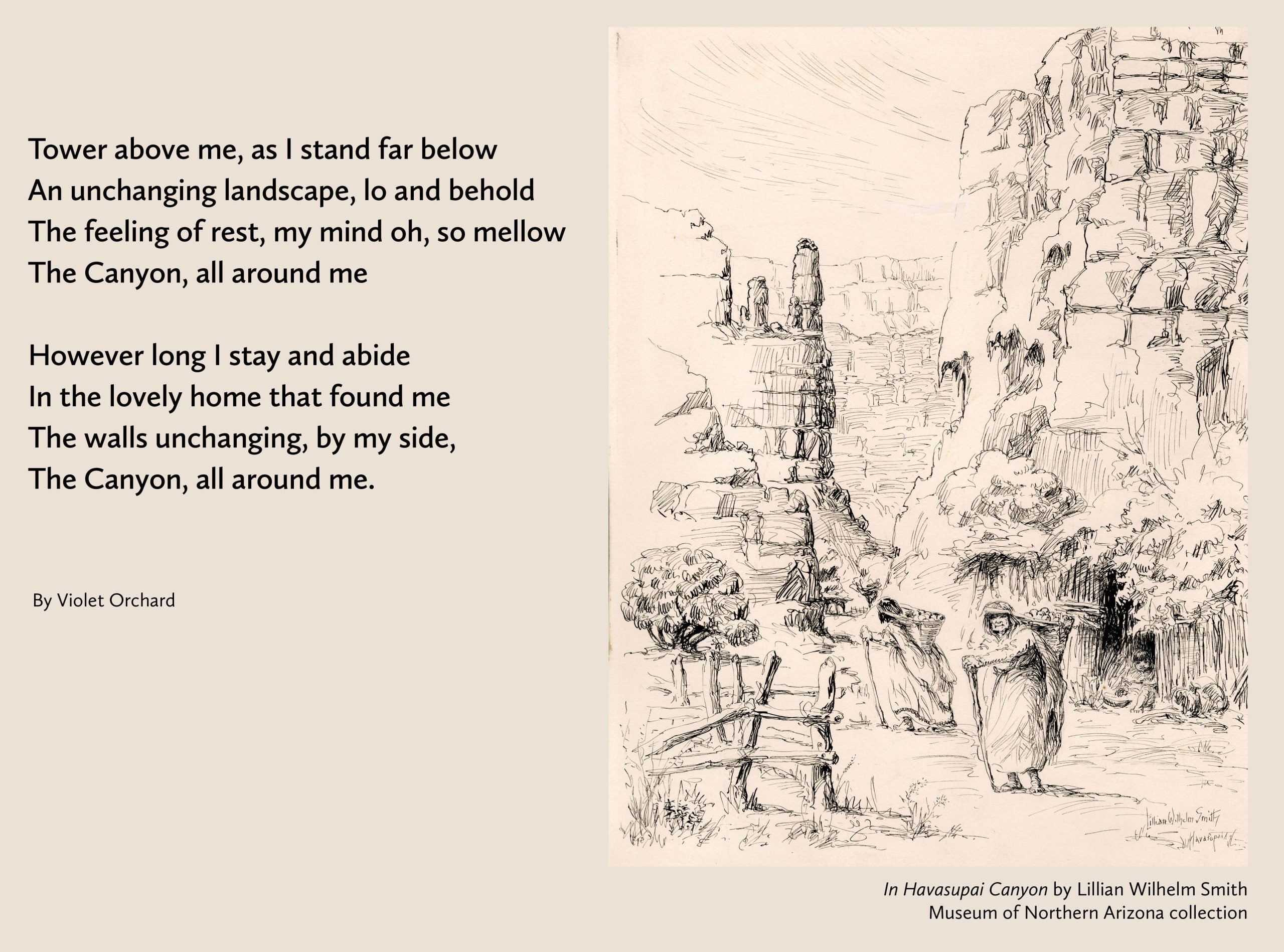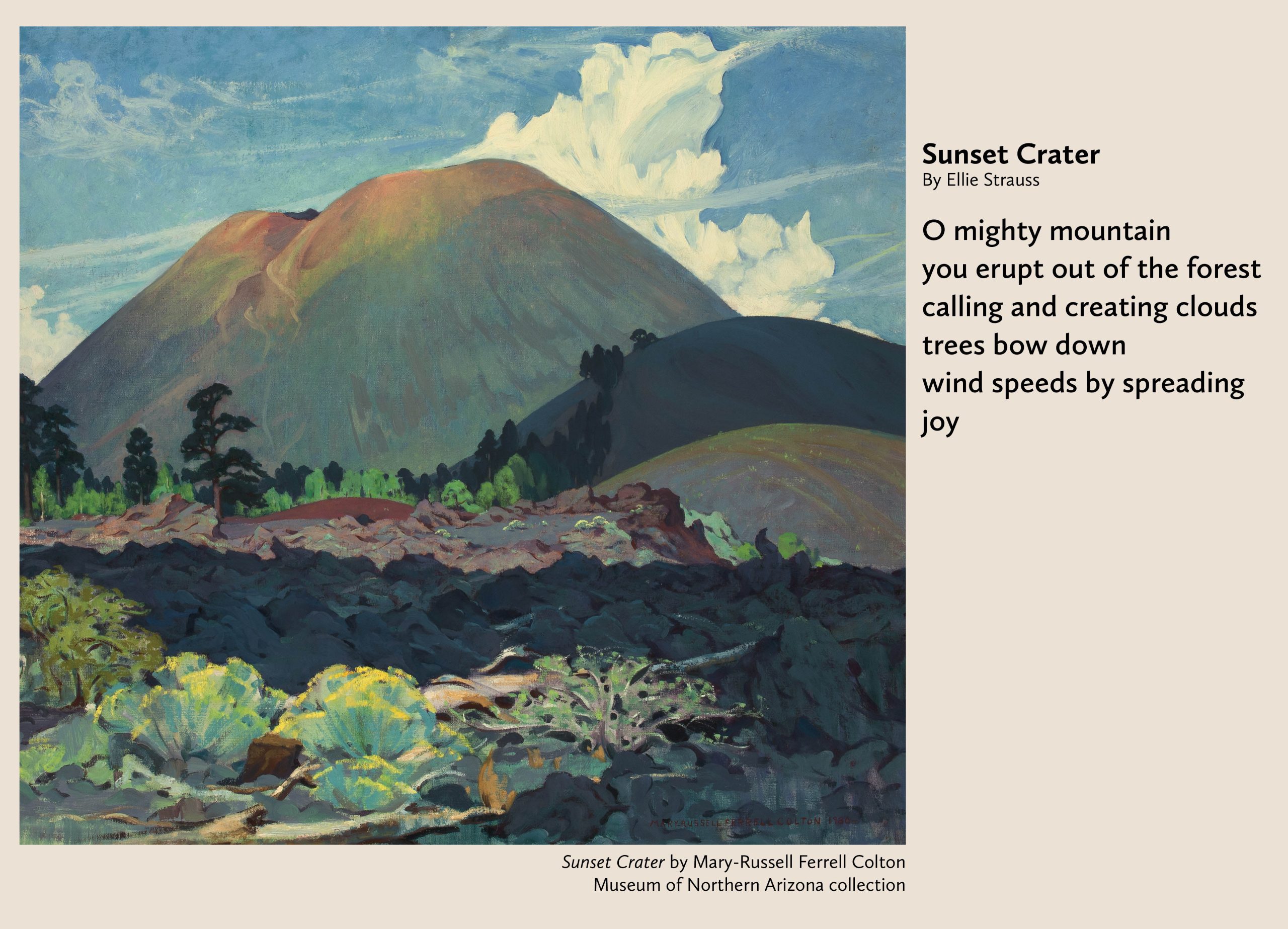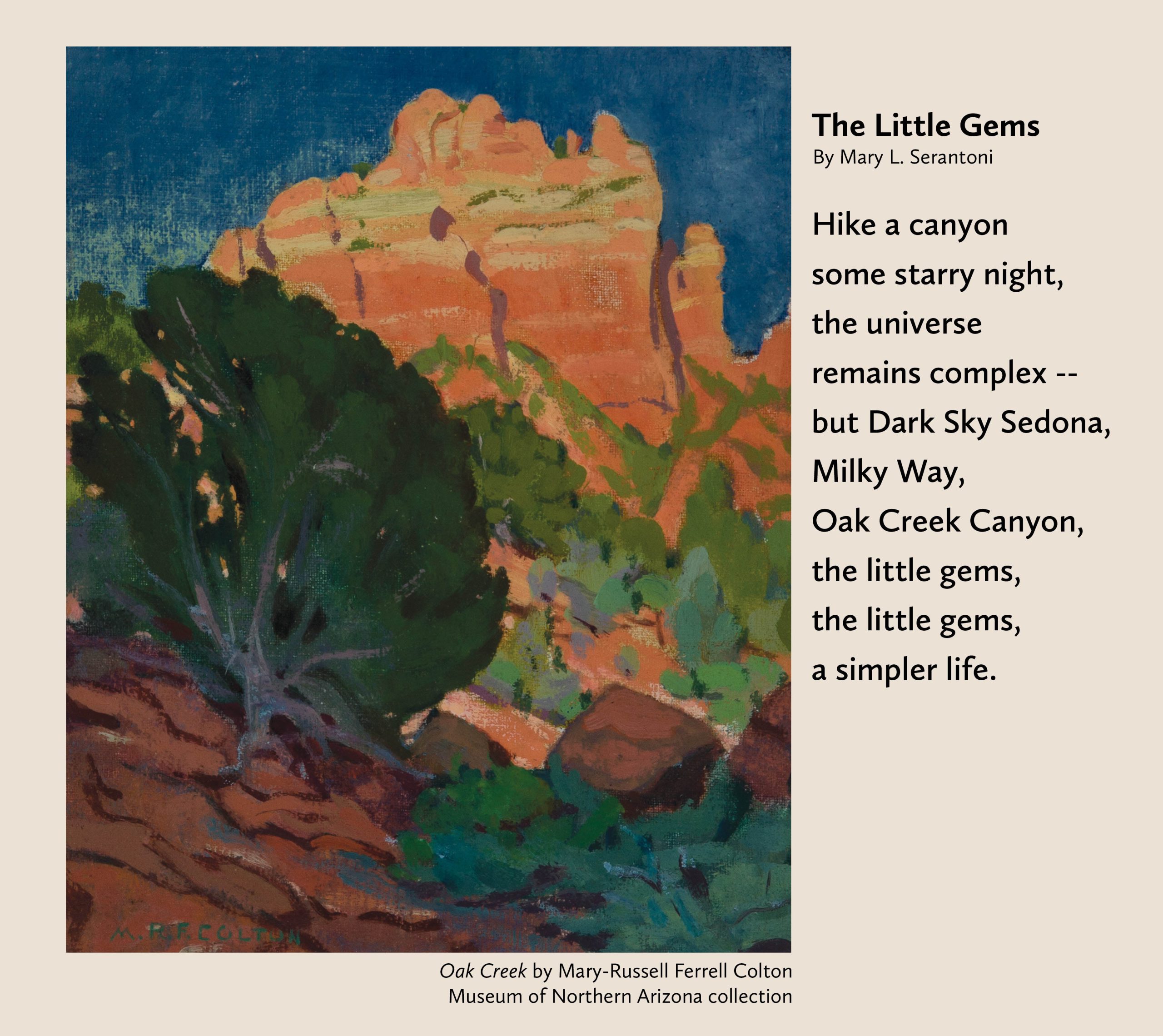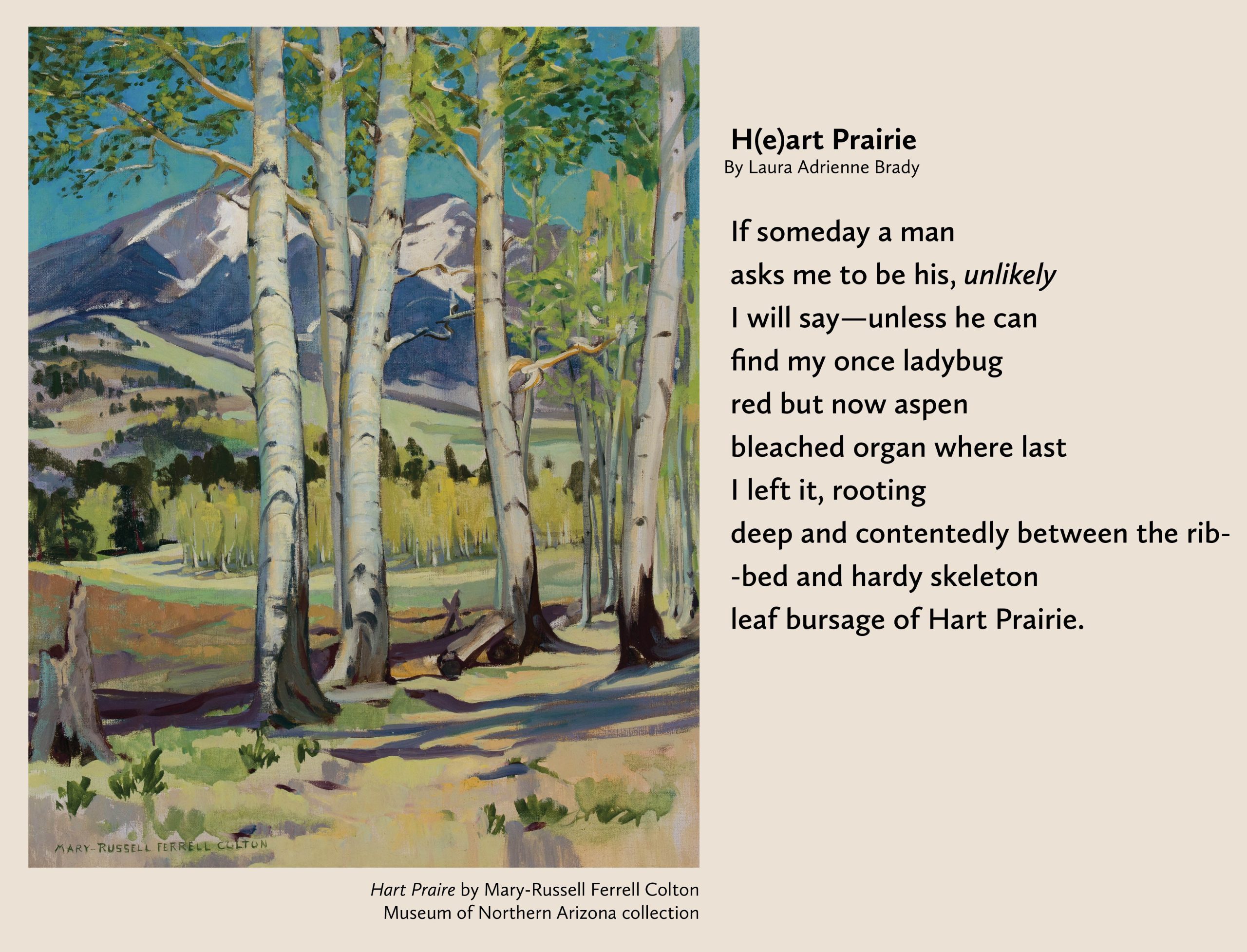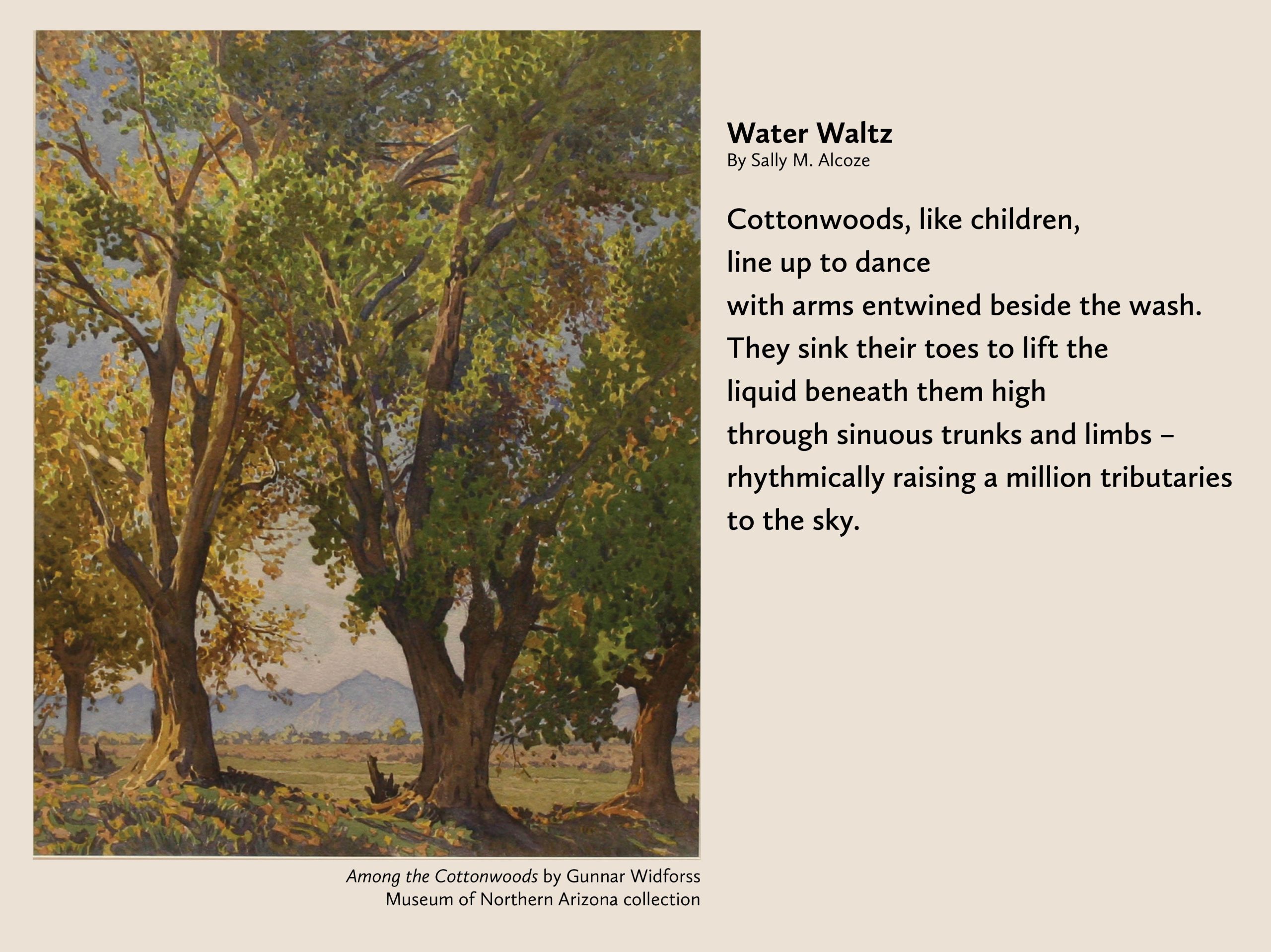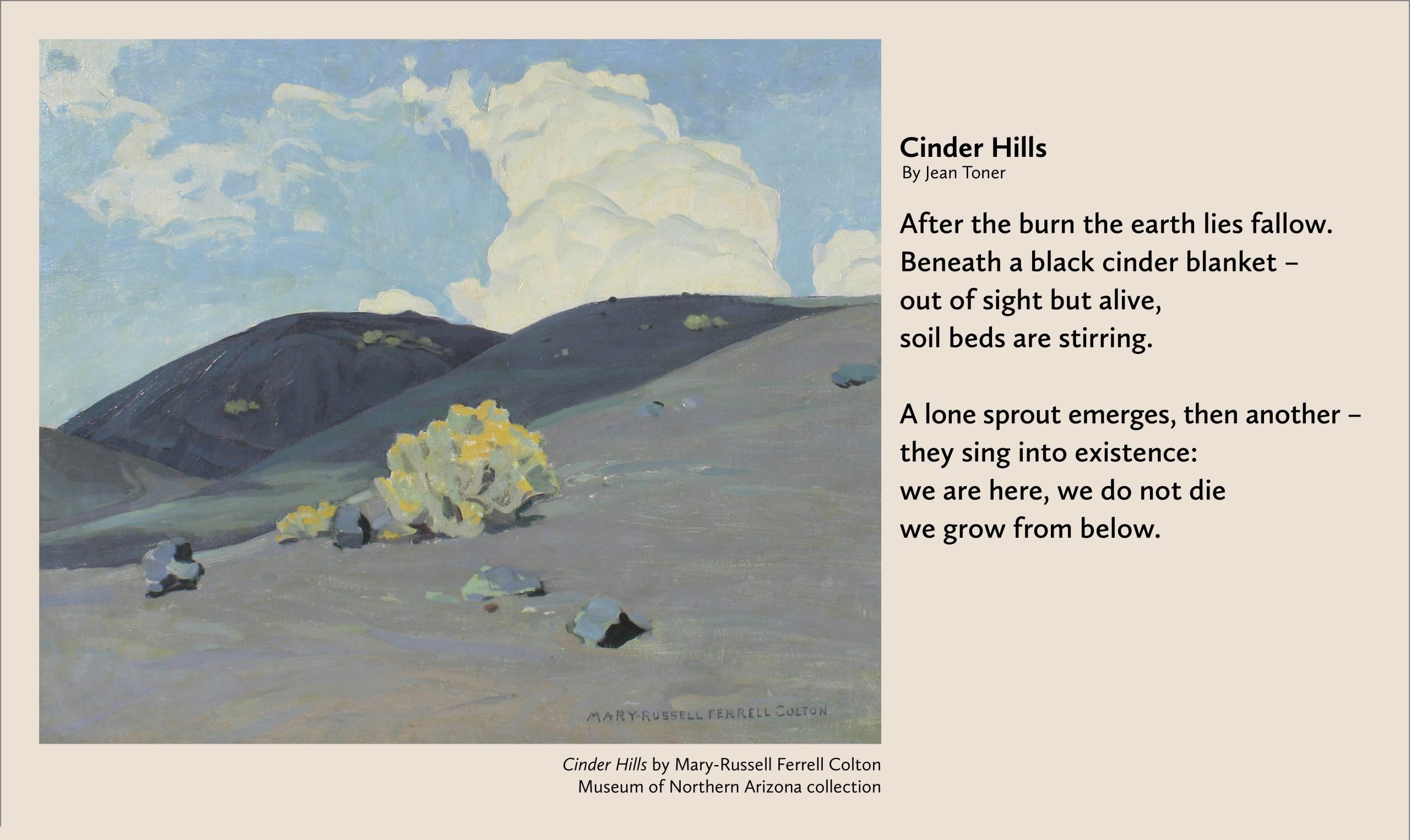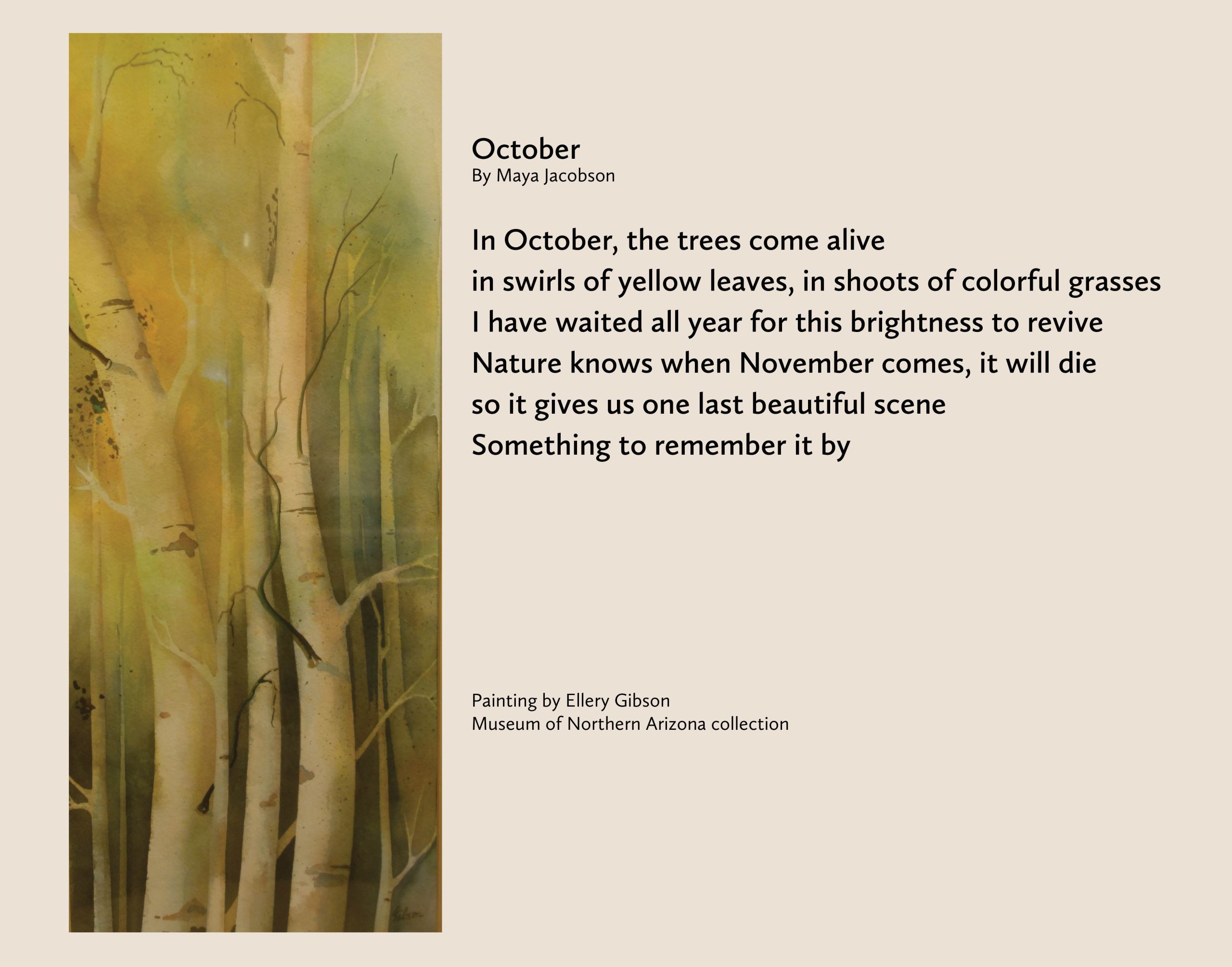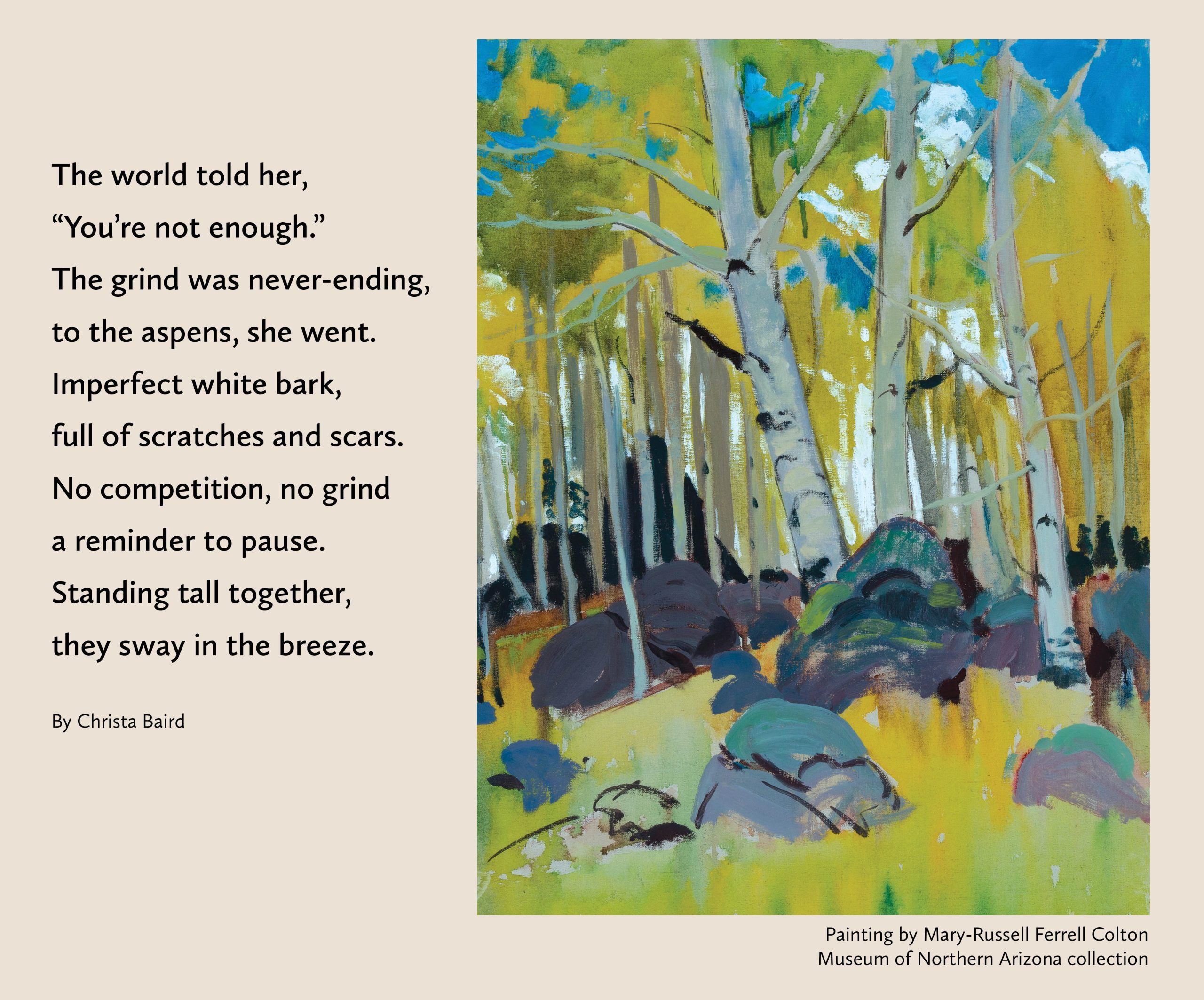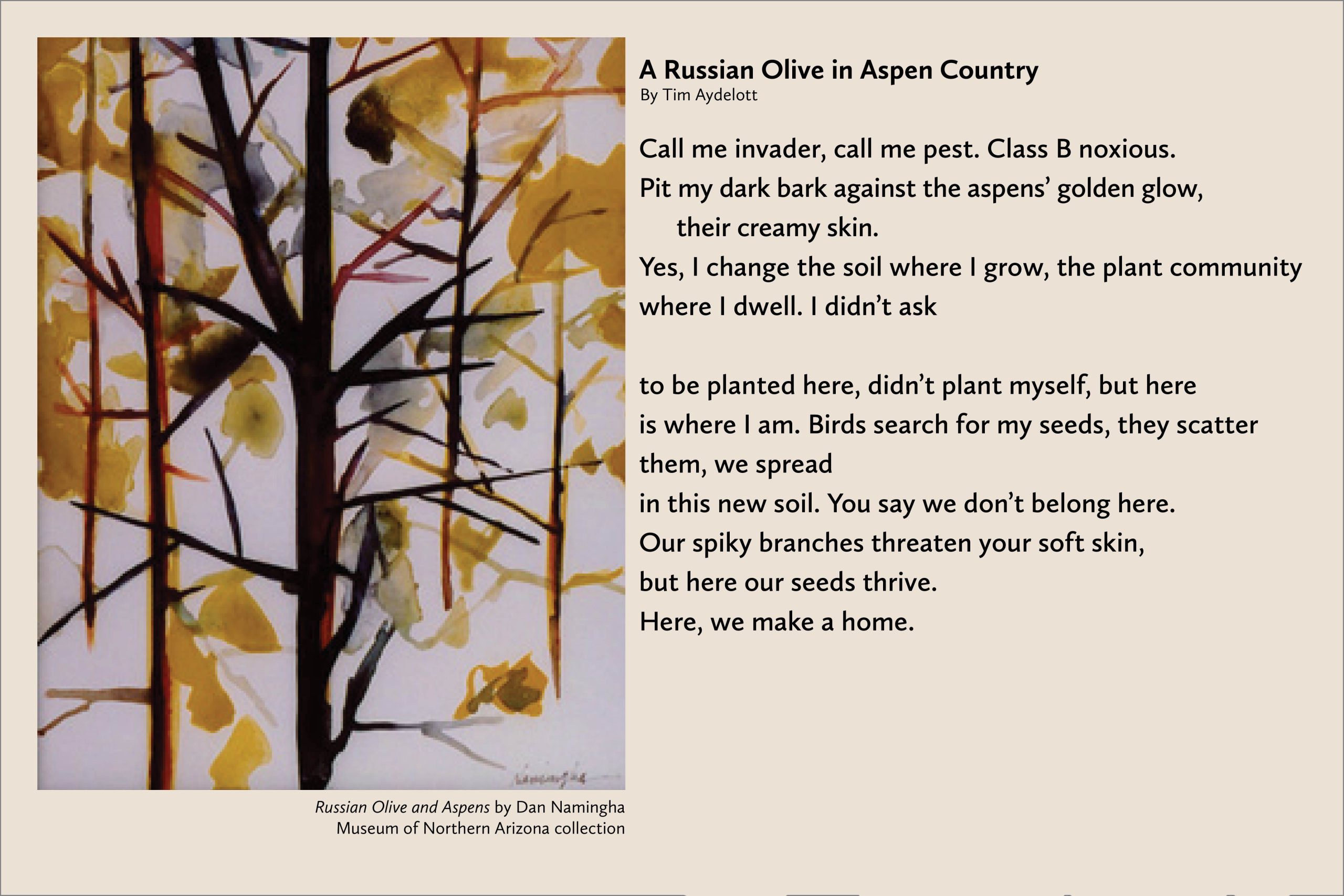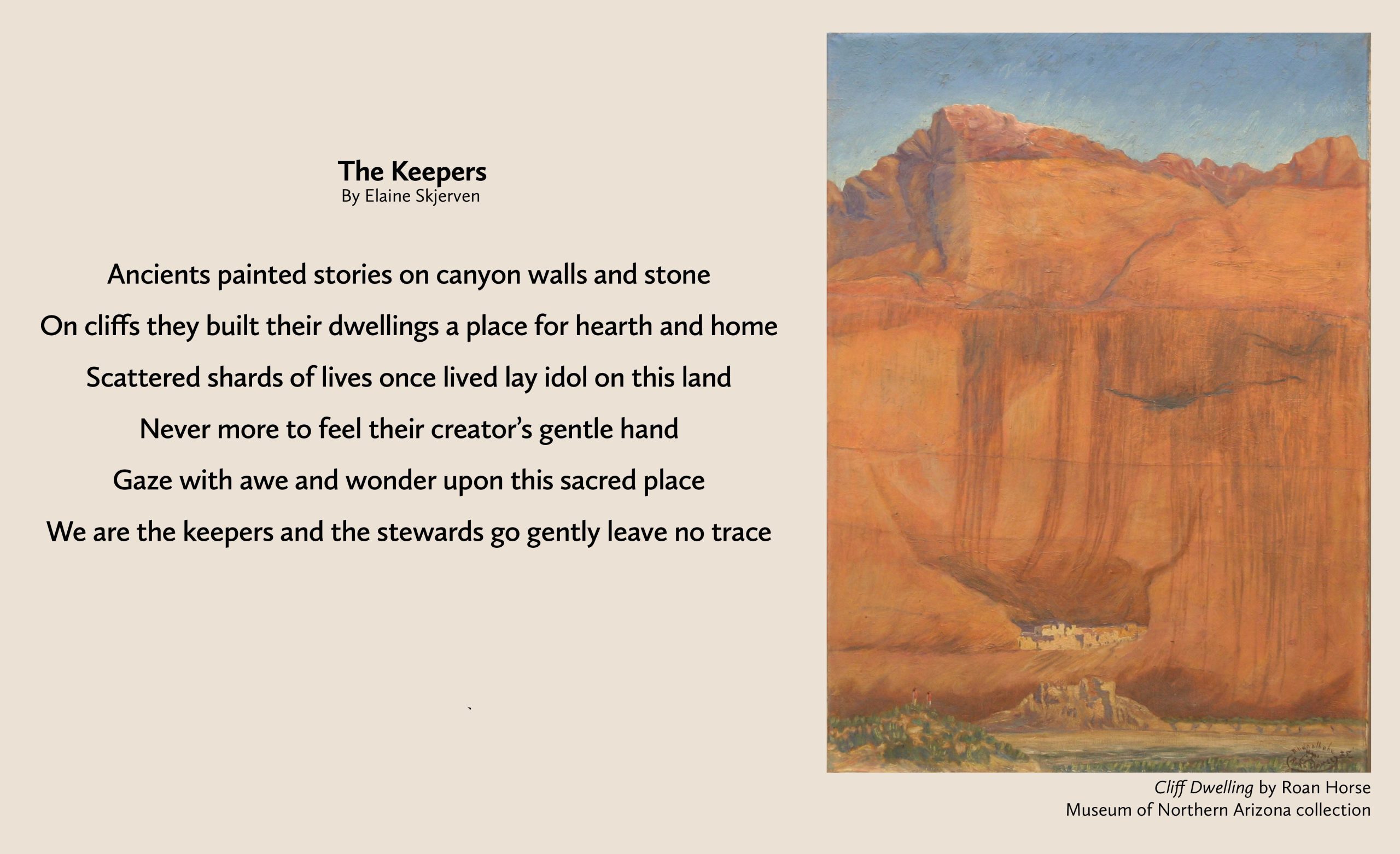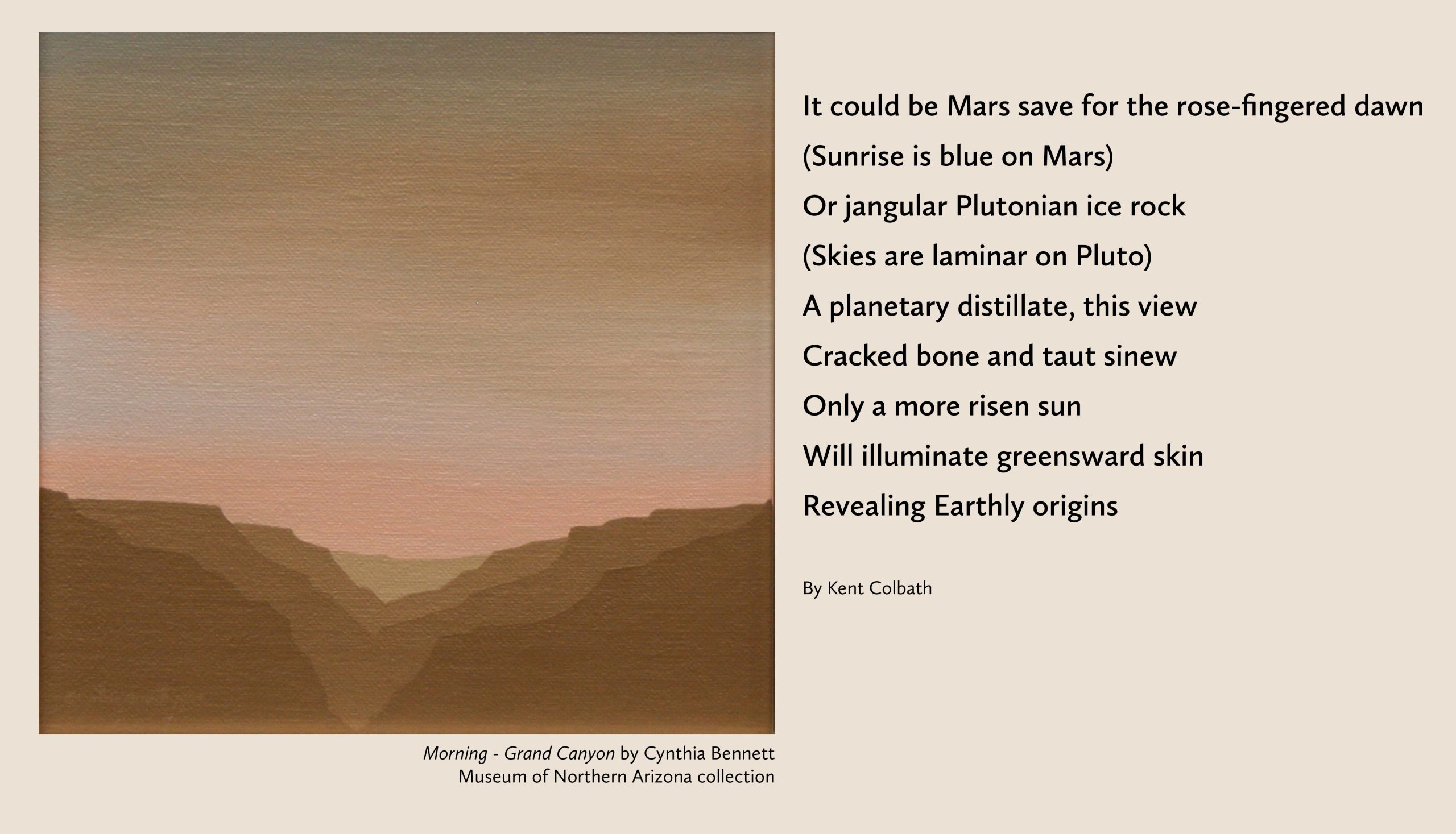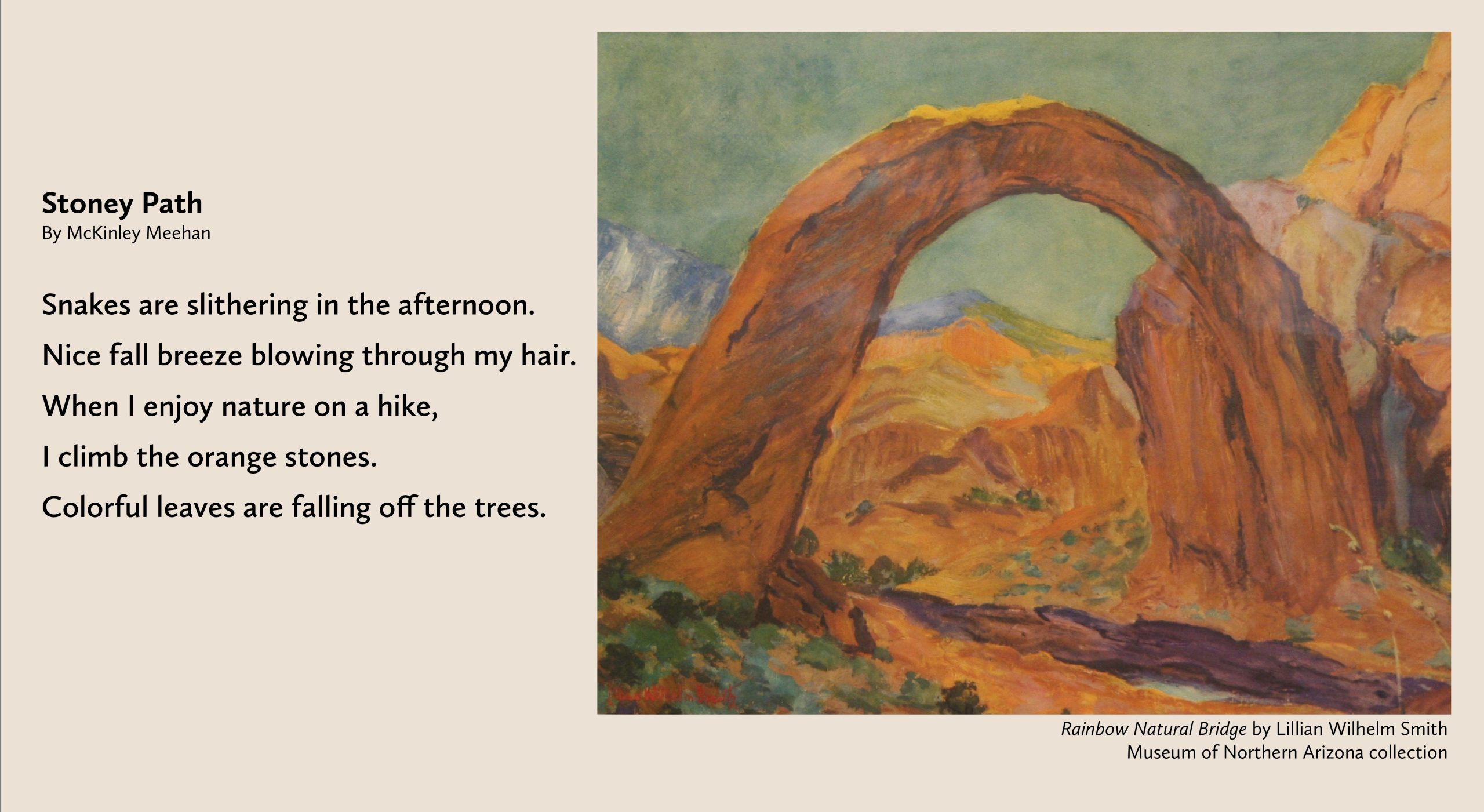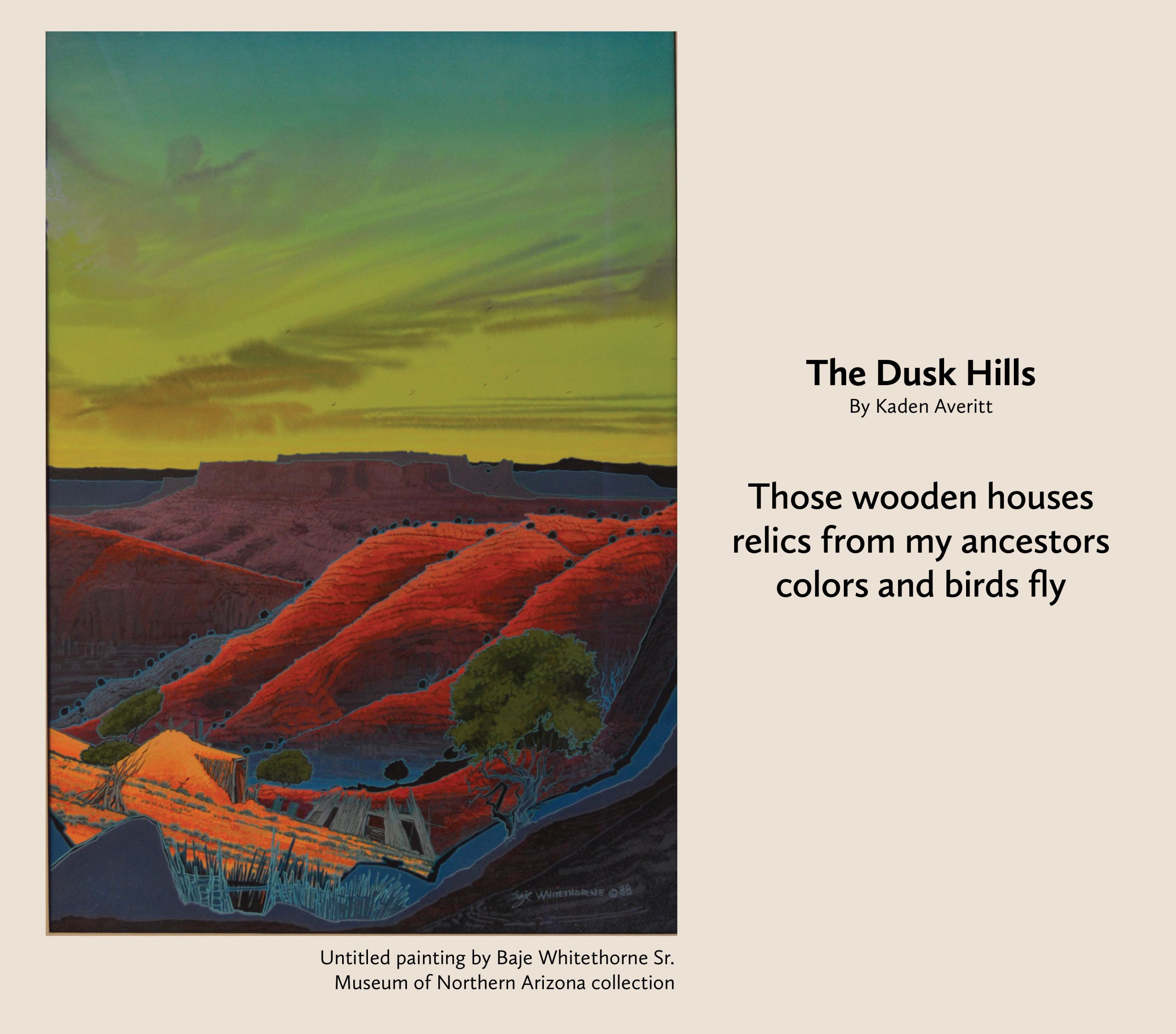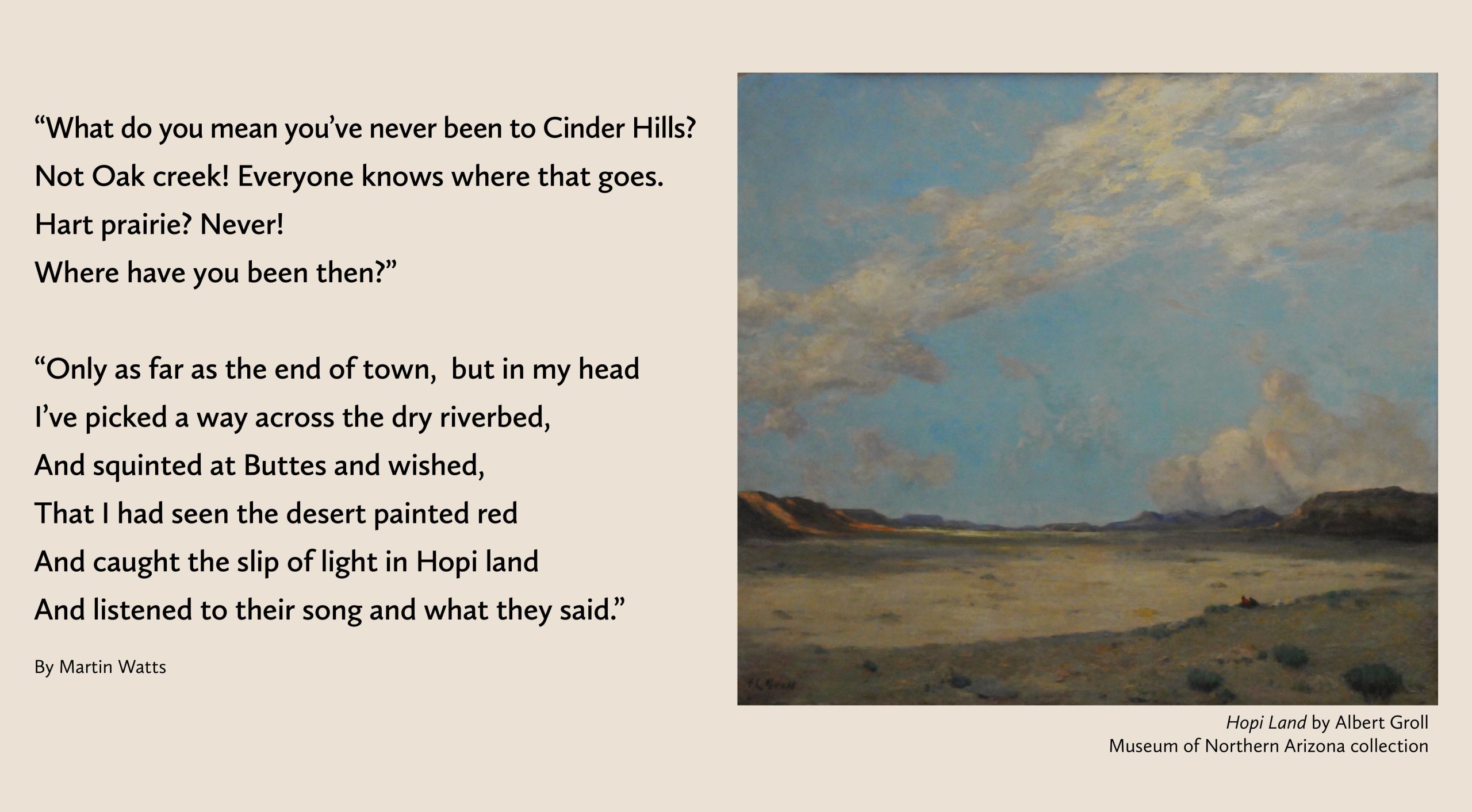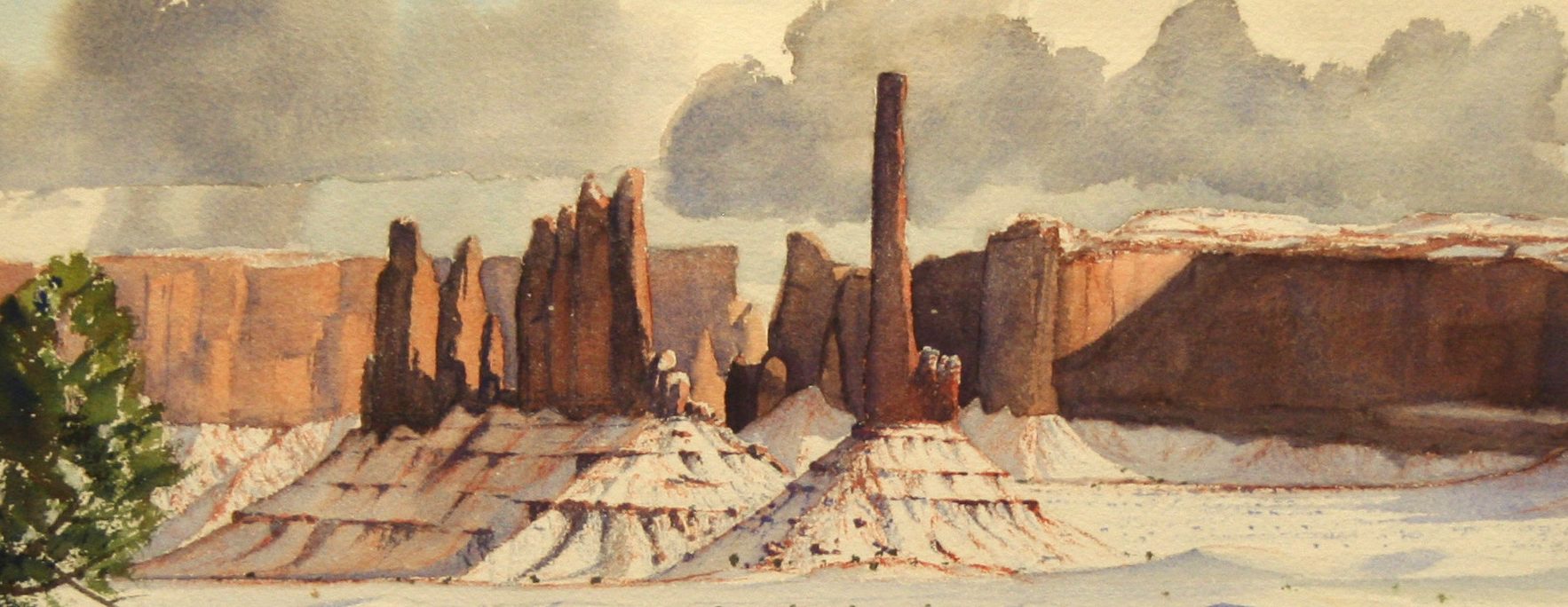
Mapping our community with poetry
Deadline to submit new poems - April 30, 2025
Mapping our place with poetry and art
The Poetry Maps project invited community members to write poems about places on the Colorado Plateau. Poetry has a powerful capacity to evoke particular places. While visual artists describe a place with color and lines, the poet plays with a palette of words. The Poetry Maps project brings poetry and art into daily life, connects people to places on the Colorado Plateau and celebrates the personal/universal experiences of this area. The set of poems you see above is currently on the Mountain Line buses. New poems are being accepted now through April 30, 2025, to go onto Mountain Line buses this summer.
Entry Guidelines:
- Submissions deadline is 11:59 pm on April 30, 2025
- Poems may be in response to any piece of art in this exhibition or to a place on the Colorado Plateau.
- Entries may be up to 10 lines maximum
- Writers may submit up to three poems.
- Poems must be suitable for a general audience (no profanity)
- Entries should be emailed to comment@musnaz.org
- Entries can also be dropped off at the Museum front desk between 10 am – 5 pm
- Entries may be mailed to Poetry Maps at MNA, 3101 N. Fort Valley Rd, Flagstaff, AZ 86001. If mailed, entries must be postmarked by April 30, 2025
- Entries will not be returned
- Due to volume considerations, a literary panel may prescreen entries
- We reserve the right to match a poem with a different piece of art if needed
- Winners will be notified by the end of May 2025.
- Winners will be invited to participate in a reading of the poems at MNA in July 2025.
Teachers
Consider using the Poetry Maps as a class project to inspire your class to write poems about place. To arrange a class visit to the Poetry Maps exhibition, or to get copies of the Poetry Maps images and poems to use in the classroom, contact Education Manager Sacha Siskonen at ssiskonen@musnaz.org
Poetry prompts
We hope this project inspires you to write some poetry or musings of your own. Try one of the following writing prompts. If you are looking for feedback as you work on crafting your poem, consider joining the MNA Writer’s Group, which meets on Zoom on alternating Wednesdays. Contact khutchison@musnaz.org
Directions: Give someone directions to or through the place. How will they recognize the destination? What should they watch out for? What are the most prominent features?
En Plein: Painters often go to a place to paint en plein air. Writers also find inspiration by visiting a location. Go to the place pictured, or one like it, and experience it. Take a journal to make notes. What do you notice? What do you think? What do you know? How is being in the place different than looking at the painting?
Memory: Write down any memories you have of the place or that it reminds you of. Use specific details.
Natural forces: How was this place formed? What were the forces that shaped it? What does it tell you about the past? When you think about all that this place has been through, how do you feel?
Where I’m From: Listen to George Ella Lyon read Where I’m From. Using the starting phrase “I am from…” create a series of sentences that tap into the concrete details of your life and experience.
Imagination: Things you imagine or wish related to a place. What would you do if you could go there? Use these lists to inform your poem.
Senses: List sensory details and feelings about the chosen place. If you were there, what would you see, smell, hear, feel, and taste?
20 Questions: Looking at the image, quickly list questions about it. When you get beyond the obvious questions, you may find a poem, if not in the questions themselves, then by trying to answer them.
Home Planet: Imagine you are from another planet, stuck on earth and longing for home. Or that you are on another planet, remembering Earth.
Tourist: Imagine someone visiting from out-of-town who is complaining about this place. Respond to them with three things you think are wonderous about the place and some advice for the visitor.
Signs of the Times: How has a place you are familiar with changed over the past 10 years?
The Artist: Have an imaginary conversation with the artist. What do you imagine about the artist from the painting? What were they thinking or feeling? What would you say to them or ask? What would they say to you?

